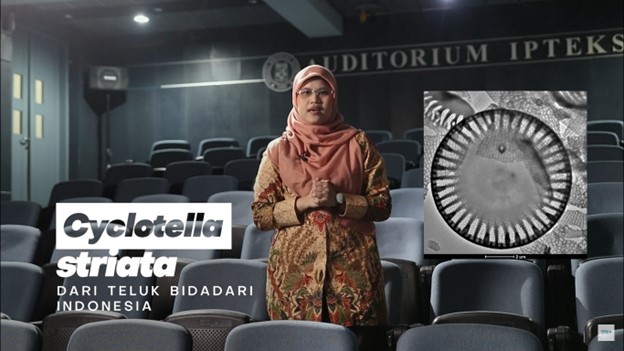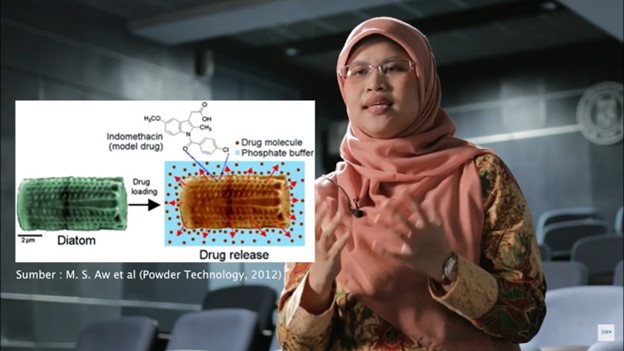Biosilica Shell for Waste Decomposition and Drug Encapsulation Innovation
By Adi Permana
Editor Adi Permana

BANDUNG, itb.ac.id — ITB LPPM held its 15th workshop on Thursday (16/03/2023) with the theme “Microalgae as a Source of Functional Biomaterials”. The workshop is part of a long-running series aiming to introduce ITB’s contribution in science and technology to the public.
As explained by Rindia Maharani Putri, Ph.D., from the Biochemistry Research Group, microalgae (microscopic algae) are an essential component of the ecosystem that has a huge role in the availability of atmospheric oxygen via photosynthesis. Unlike other microorganisms or plants that have cell walls made of carbon, some microalgae species have cell walls made of biosilica shells- such type of microalgae is called a diatom. With a suitable technology, biosilica shells from diatoms can be turned into various innovative products that benefit society.
To delve more into the potential utilization of biosilica shells, Rindia and her team conducted experiments on diatoms found at the beaches of Seribu Islands. Extraction of biosilica shells from diatoms is done through oxidation and combustion at a temperature of 550oC to remove all organic elements. The biosilica obtained has a unique structure with a wide and porous surface.
“At the edge of its surface, there are numerous pores, about hundreds of nanometers in size. Inside these large pores there are smaller pores inside these pores with the size of around 3 nanometers. This is called the porihierarchical system," Rinda illustrated.
The porihierarchical structure allows biosilica to absorb other compounds, one of which is titania nanoparticles. Titania itself is a photocatalyst compound that can accelerate reaction rates in the presence of light. Thus, the absorption of titania done by the porihierarchical structure can produce nanotitania biosilica composites that can be used to degrade palm oil mill effluent (POME). The process can be supported with the help of xenon lamps.

"The photocatalyst can degrade twice as much POME waste as those that do not use biosilica. About 47% of the waste can be degraded based on our study," Rindia added.
Aside from being environmentally friendly, biosilica’s structure makes a great ingredient in drug processing, specifically its encapsulation. Its stable nature can protect medicinal compounds from degradation and aggregation. From this prospect, the ITB biochemistry laboratory plans to develop biosilica for encapsulating complex drugs that are made of peptide compounds like insulin. Using biosilica is expected to protect insulin’s structure from deterioration in the digestive system and optimize the compound’s medicinal effectiveness.

"From our research, we are reminded once again to study and utilize Indonesia's natural wealth. Small plankton like microalgae which are abundant in our seas have many benefits if they are processed with the right technology," Rindia noted.
Reporter: Hanifa Juliana (Urban and Regional Planning, 2020)
Translator: Ruth Nathania (Environmental Engineering, 2019)

.jpg)
.jpg)
.jpg)
.jpg)
.jpg)

.jpg)
